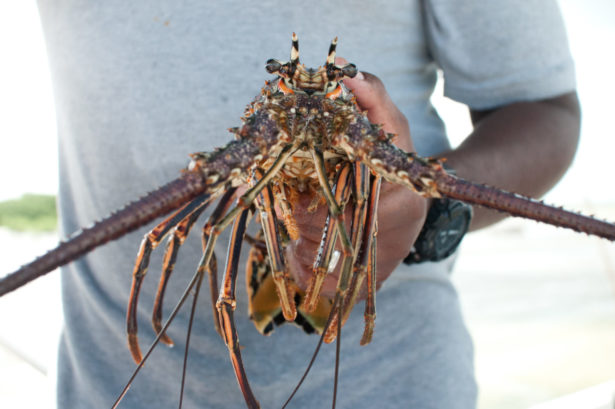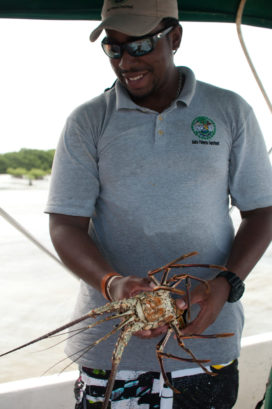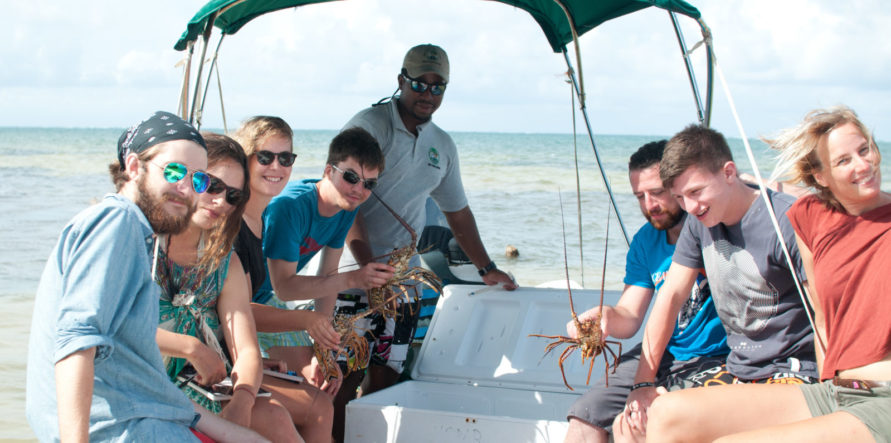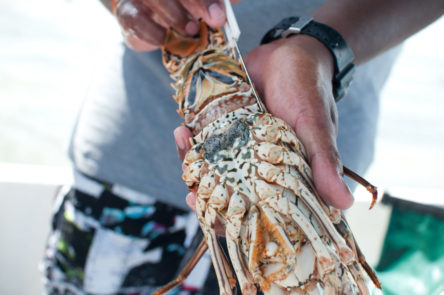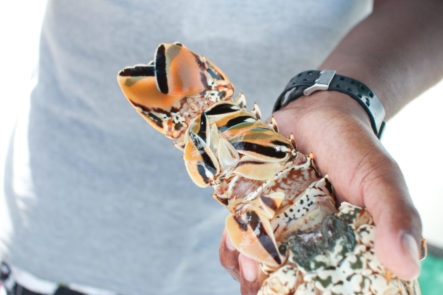It is now the time of year when the fishers of Belize set sail to fish for some Caribbean Spiny Lobster! This valuable and tasty crustacean is Belize’s main fishery – in order to ensure everyone can enjoy eating grilled lobster for generations to come, there is a national fishery closure from 15th February to 14th June every year. Volunteers on our Belize expedition were lucky enough to experience lobster season opening on the 15th June, while in Bacalar Chico Marine Reserve (BCMR). Having been involved in lobster surveys during their expedition, our volunteers were eager to learn more about these creatures and their fisheries…
Henry Brown, Fisheries Officer and Marine Biologist stationed at BCMR, was the perfect person to teach our volunteers about the Caribbean Spiny Lobster.
Henry began with a brief talk about lobsters and their anatomy, demonstrating their different appendages and body parts.
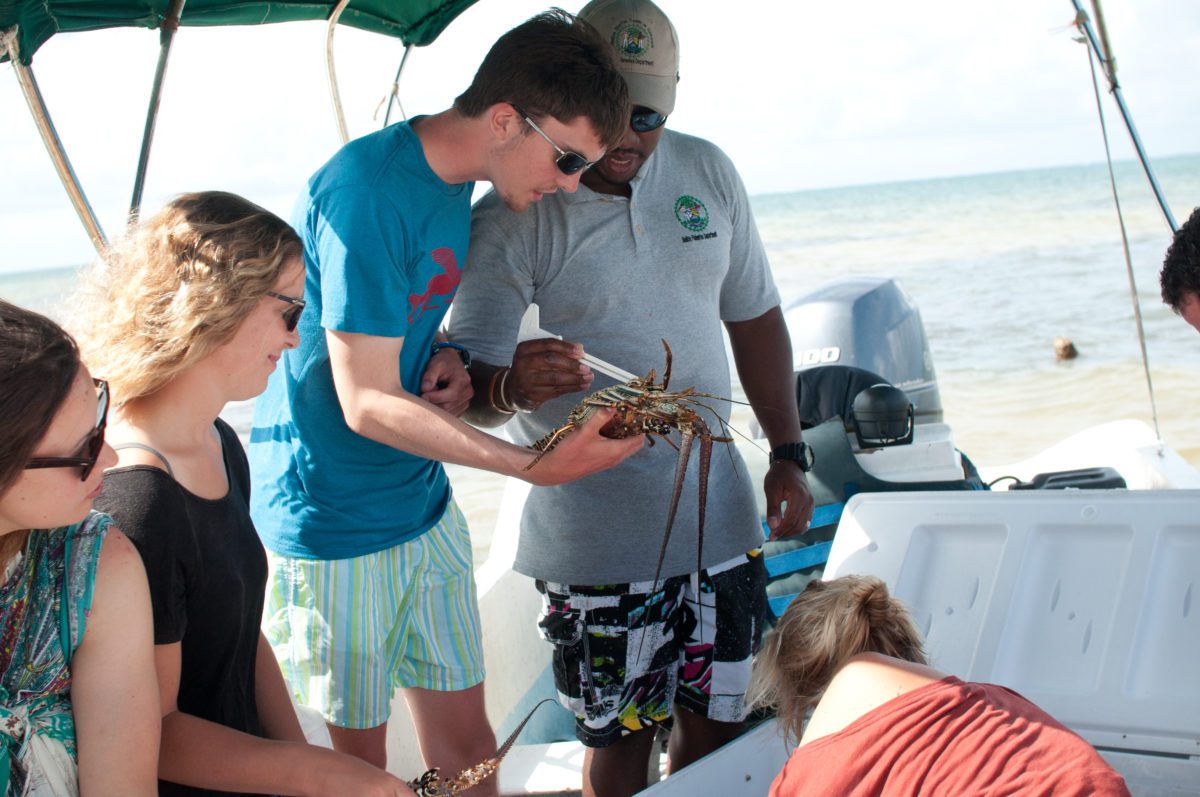
A hands-on demonstration of lobster anatomy! Photo: Olivia Lacasse
He said: “Caribbean spiny lobster is one of Belize’s main food delicacies and the country’s highest exported seafood. These are all mature lobsters as they can sexually reproduce. As we turn over the lobster we can determine their sex – this is a male lobster.
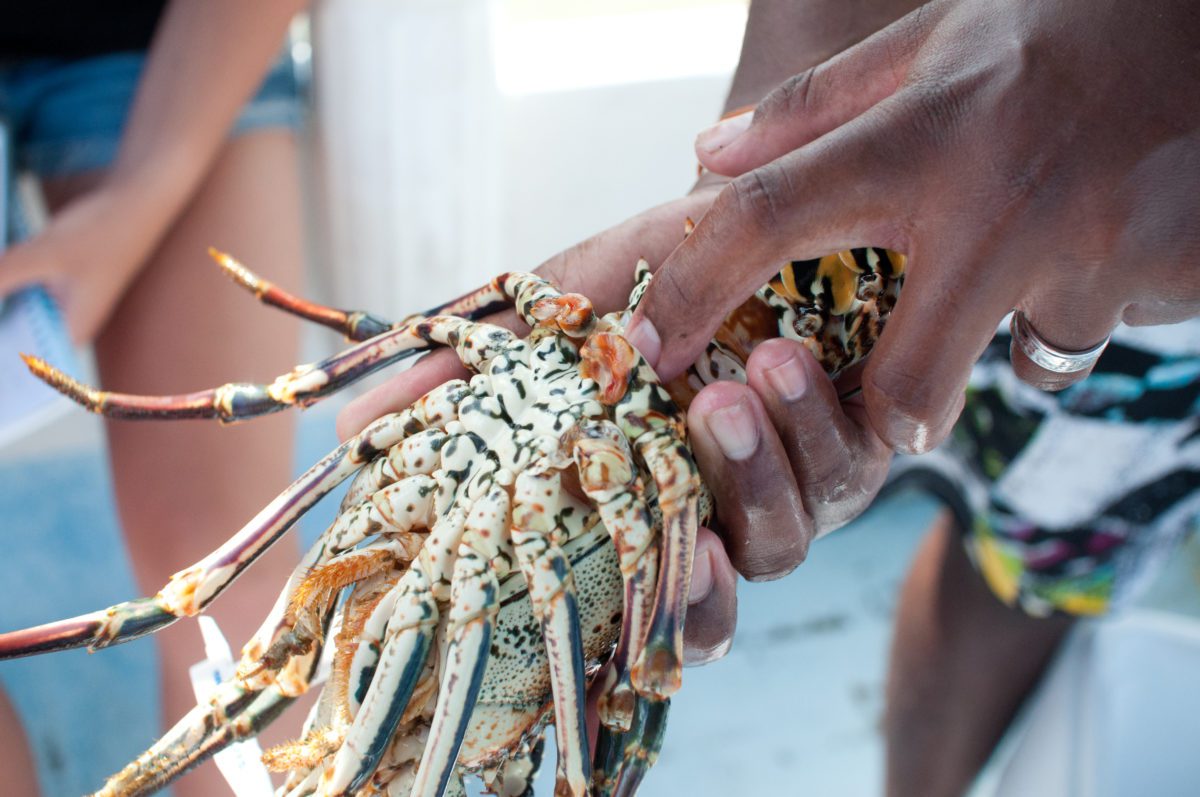
Underside of a male lobster. Photo: Olivia Lacasse
In comparison to the males, a female lobster has a tar spot, which indicates that it is due to have eggs. It also has an extra pair of pleopods.
Female lobsters can be staged by measuring the hairs; the hairs can be barely seen in Stage 1, are 1mm in Stage 2, and 2mm or greater in Stage 3.
We can measure the carapace from the notch between the eyes using a calliper. The legal size requirement is greater than 3 inches.
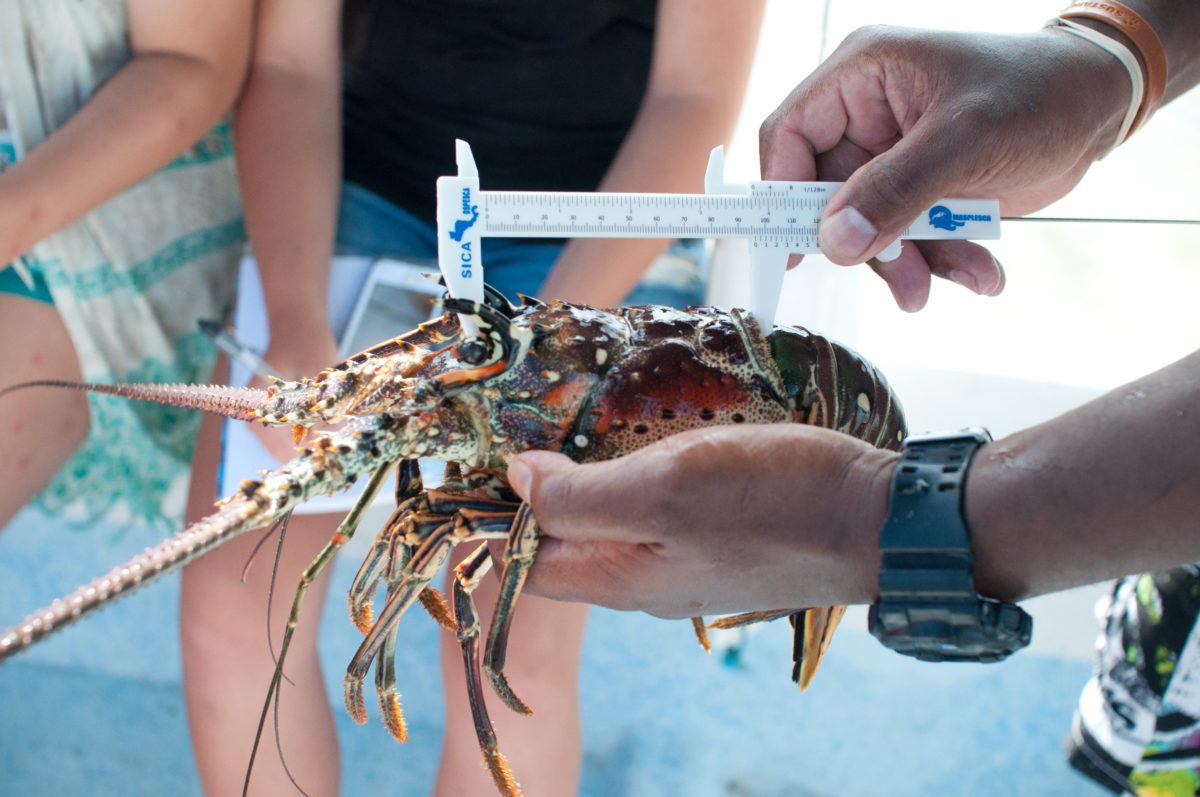
Measuring the carapace. Photo: Olivia Lacasse
Additionally, it is legally required that the lobster must be post molting. If the tail is to be sold alone, it must weigh more than 4 ounces.”
Caribbean Spiny Lobster – Question time!
Q: How long does it take for larvae to become an adult lobster?
Henry: There are 11 stages before reaching the pelagic stage. From the eggs hatching to becoming a mature, sexually active, adult takes approximately 7 to 10 years.
Q: How many times does a lobster molt before reaching an adult stage?
Henry: The shell grows to certain capacity before molting. There is no specific time frame, but usually this is when the adult is feeding well.
Q: What do lobsters feed on?
Henry: Lobsters are bottom feeders. I have witnessed lobsters eating dead fish.
I have even seen a lobster eating a dead lionfish!
Q: How many eggs does a female lobster carry?
Henry: About 1 million eggs.
Q: Where can you find the Caribbean spiny lobster?
Henry: They can be found in the Caribbean Sea, up to the Gulf of Mexico and Florida.
Q: What is the life expectancy of a lobster?
Henry: Lobsters live for about 20 years.
Q: Do lobsters have predators?
Henry: Lobsters are eaten by sharks, loggerhead turtles and deep sea squid. Their antlers and horns are their only line of defence.
Q: What are the techniques for catching lobsters?
Henry: Lobsters are caught using a hook stick. A hook stick is a rod with a big hook on the end which has been filed down and made smoother than a standard fish hook. Most people try and hook lobsters on the chest, so that the meat in the tail remains unspoiled. However, it is easier to hook lobsters in the tail.
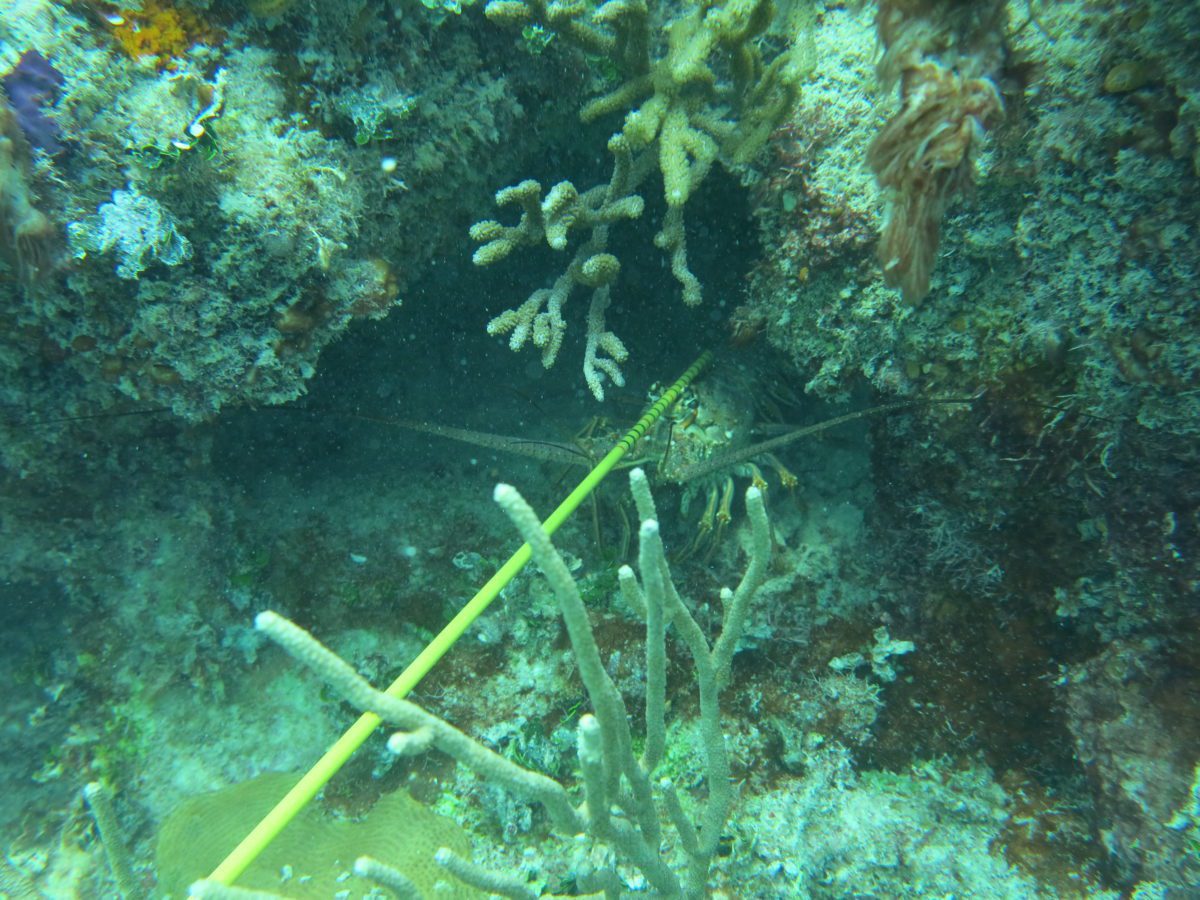
Measuring the lobsters using a tickle stick. Photo: Fredi Peiffer
Q: What is the average lobster catch per year?
Henry: The catch per year is monitored to a certain extent and the quota varies annually. The catch is also influenced by surveys. For example, if there is a low abundance of lobsters recorded, then the quota will be smaller. There is also a maximum limit that cannot be exceeded, which is set by the International Trading Association.
We are currently monitoring fisherman to gain a better idea of the abundance by collecting data on fishing effort, time spent fishing, the number of fisherman and the number of catches per unit.
Q: Is lobster aquaculture present?
Henry: Previous research demonstrates that lobster farming is not really an economical option. Shrimp is the only seafood farmed in Belize. There was a conch hatchery south of Rocky Point, however it was not successful.
Q: Do fishermen from neighbouring countries ever try to fish in Belize?
Henry: Yes – we try to protect Belizean water. This can happen near the Mexican and Guatemalan borders. If this type of illegal fishing happens, the fisherman will be charged the maximum fine to try and deter this from happening. Night fishing is also a problem, as lobsters are active at night.
Q: What are the penalties for illegal fishing?
Henry: The fine is 500 dollars. People can also receive a prison sentence, depending upon the judge’s decision.
Q: Do you need a licence to fish lobsters?
Henry: Yes – you are required to hold a conventional fishing licence from the fisheries department.
Q: What is the price a local fisherman can receive for a lobster?
Henry: It depends upon the demand. You can get 25 dollars per pound of tails, which is approximately 3 tails at the legal weight of more than 4 ounces.
Q: Can you eat any part of the lobster other than the tail?
Henry: Yes, you can eat meat from the head but it is quite time consuming. There is also some meat in the antlers and the legs can be used in soup.
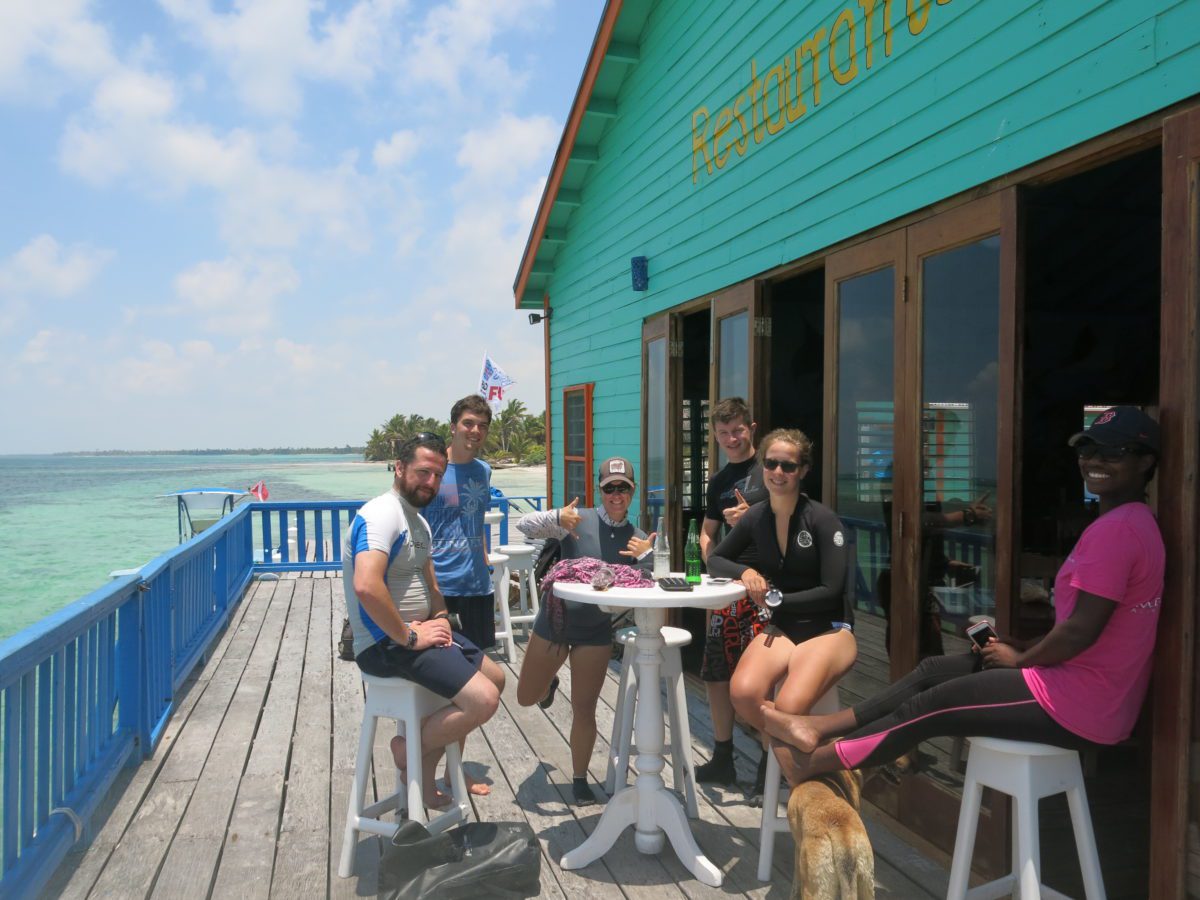
Lobster Leg Soup? Yes please! Photo: Fredi Peiffer
Q: Do the antennae grow back?
Henry: They can heal if they are damaged. I have some lobsters with short antennae.
Q: Are lobsters territorial?
Henry: No – you often see 3 or 4 together, usually 2 adults and 3 juveniles. They tend to stay within caves and holes.
Q: What is your favourite lobster recipe?
Henry: Barbecued lobster!

Caribbean spiny lobster is one of Belize’s main food delicacies. Photo: Tony Ellis
Want to see a lobster underwater (or on the barbeque!) for yourself? Find out more about our volunteer expeditions in Belize
Cover image: Laetitia Clement


